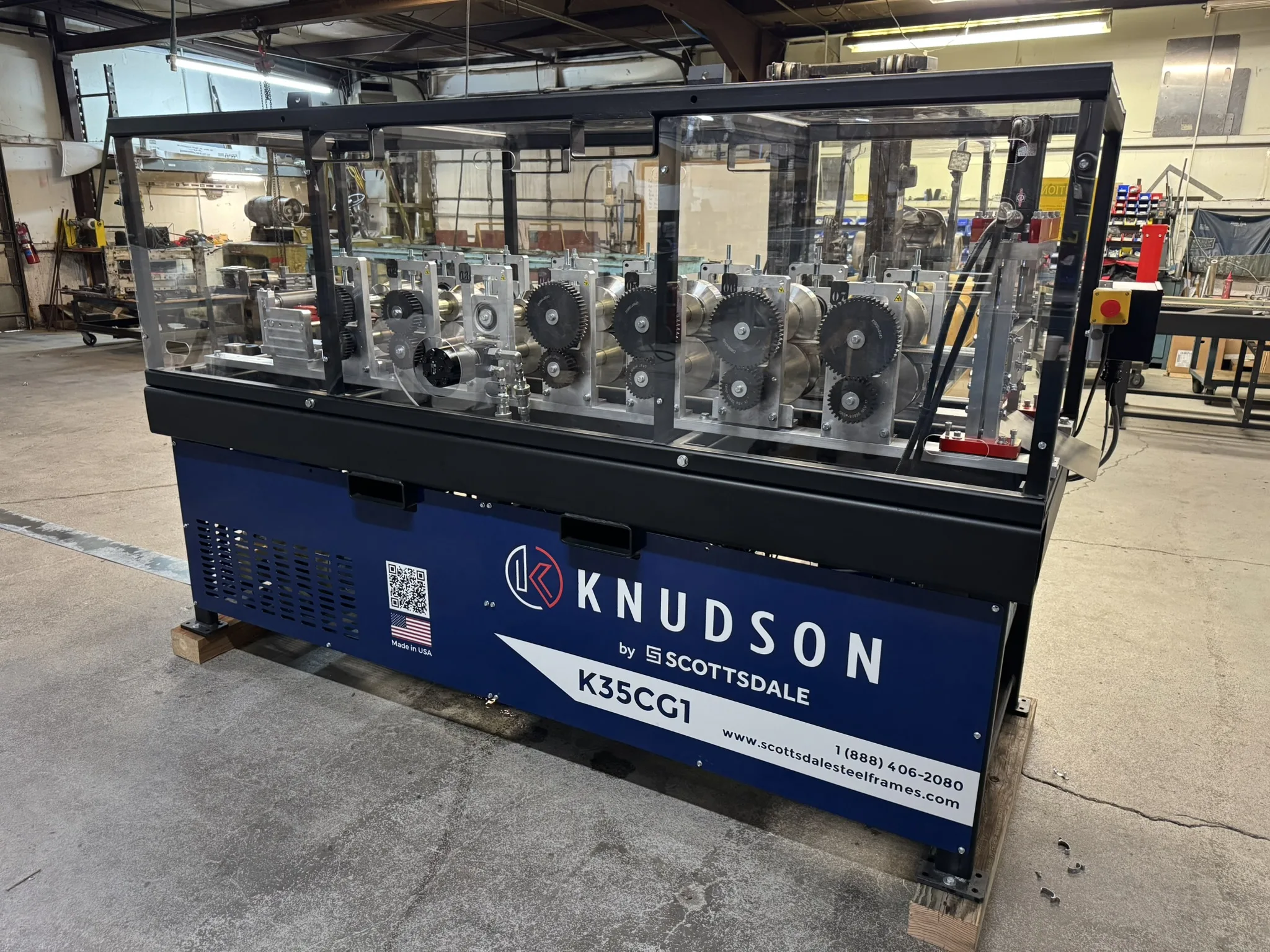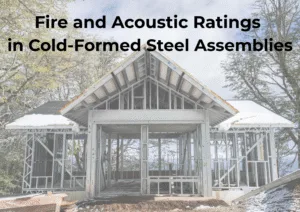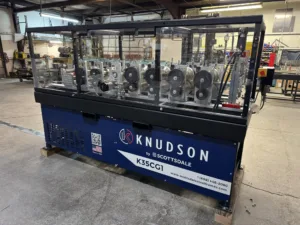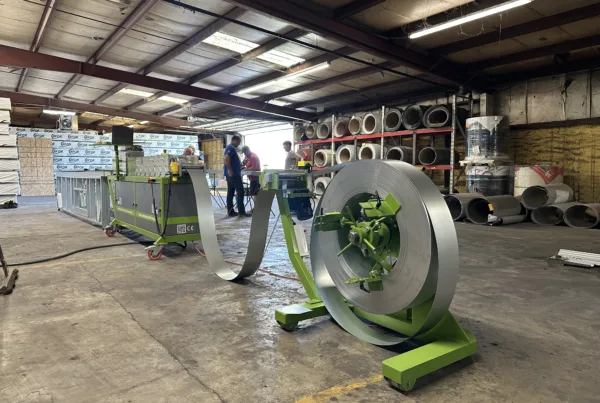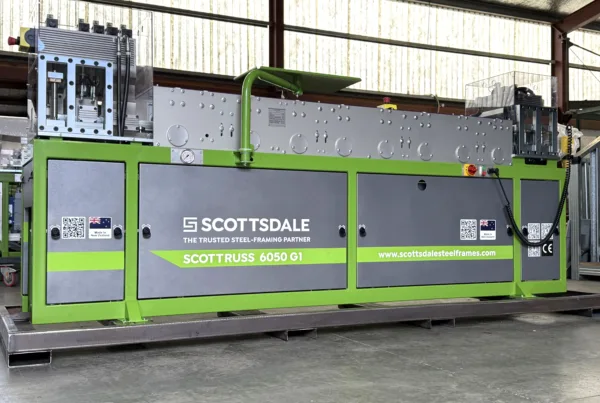Modern construction demands systems that deliver strength, efficiency, and acoustic isolation. By integrating a roll forming machine with advanced technology, builders can produce steel framing components that support modular construction while enabling highly engineered acoustic solutions. Today’s roll forming technology allows designers to combine precision manufacturing with lightweight, high-performance assemblies that achieve exceptional acoustic isolation without sacrificing space or structural efficiency. As modular construction expands worldwide, customizable steel framing has become the preferred system for builders seeking scalable acoustic solutions in residential, multi-family, and commercial environments. In this article, we explore acoustic solutions using roll forming machines for steel framing of modular construction.
Key Concepts of Acoustic Insulation for Steel Framing and Modular Construction
Acoustic insulation is essential for creating healthy, high-comfort environments. Effective acoustic solutions require more than material selection; they depend on understanding how sound interacts with structures. The mitigation or reduction of noise is achieved through the application of different principles according to the type of noise that needs to be insulated. Modern steel framing produced by a roll forming machine offers predictable performance for assemblies that target acoustic isolation in modular construction and traditional projects alike. Roll forming technology allows consistent tolerances, enabling acoustic solutions to perform exactly as designed.
Types of Noise and Why Steel Framing Excels in Acoustic Isolation
Airborne noise travels through air, while impact noise transfers through solid structures. Acoustic solutions must identify the noise source to create effective acoustic isolation. Steel framing provides structural versatility, allowing engineered systems to manage both airborne and impact noise. Because the profiles are created with roll forming technology, each component supports modular construction workflows where acoustic solutions must be lightweight, strong, and repeatable.
Refer to our article “Fire and Acoustic Ratings in Cold-Formed Steel Assemblies Simplified” and learn more about the cold-formed steel fire and acoustic data directory by the Steel Framing Industry Association (SFIA).
The Mass Law Principle and Modular Construction
Insulation by mass is the oldest, most intuitive, and basic principle. It was used in construction for a long time. The Mass Law says that the acoustic insulation of a structure is directly proportional to its weight per unit area. The Mass Law states that heavier walls improve acoustic isolation. Traditional materials like concrete meet this requirement but introduce weight, cost, and space constraints, especially problematic in modular construction.
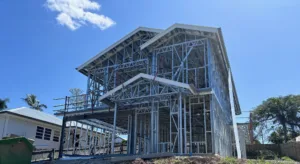
Steel framing created by roll forming machines provides a lighter, more flexible alternative, enabling acoustic solutions that do not rely solely on mass. Roll forming technology makes it possible to engineer acoustic isolation systems that outperform heavy walls while aligning with the speed and efficiency goals of modular construction.
Mass-Spring-Mass Systems: High-Performance Acoustic Solutions with Steel Framing
Multi-layer insulation systems using the Mass-Spring-Mass principle overcome the limitations of mass-only walls. Steel framing is ideal for creating these systems because a roll forming machine produces precise cavities, consistent stud spacing, and reliable interfaces for insulation materials. Roll forming technology ensures every component fits exactly as designed, enabling acoustic solutions that provide superior acoustic isolation while remaining compatible with modular construction. In these systems:
The Mass Layer: The first and last layer of the assembly are composed of dense materials that act as barriers for sound waves. Usually, 12.5 mm thick drywall panels are the most common mass component. The addition of a second layer of laminated gypsum or another dense material on each side of the wall increases acoustic resistance.
The Spring Layer: The material that fills the cavity between the mass layers is the “spring” of the system. This space is generated by the separation between the profiles that make up the structure. Fibrous and porous materials are the most used due to their high absorption capacity.
The following table provides a clear comparison of the two principles, highlighting why modern construction favors the multi-layer systems.
| Characteristic | Mass Insulation | Multi-Layer Systems (Mass-Spring-Mass) |
| Physical Principle | Resistance to vibration by inertia | Damping of vibrations and energy dissipation |
| STC | Limited at high frequencies | High performance |
| Typical Components | Concrete walls, solid brick | Drywall panels + fibrous insulators |
| Weight/Thickness | Extremely heavy and thick | Lighter weight and less thickness for superior performance |
| Efficiency | Suitable for some low frequencies, but limited for airborne and impact noise | Exceptionally efficient for airborne noise, decoupling is key for impact noise |
| Predictability of Calculation | Dependent on execution, meticulous control of thickness | Precise calculations and guaranteed results due to industrialization |
BuildSteel recently published “Cold-Formed Steel Framing: Engineering the Details of Your Next Project“. The eBook covers details on how to engineer cold-formed steel subfloors for quiet spaces and how exterior continuous insulation requirements by the energy codes affect cold-formed steel design and details.
Decoupling and Resilient Channels in Steel Framing Acoustic Solutions
Decoupling physically separates structural layers to prevent vibration transfer. In steel framing assemblies, resilient channels offer one of the most effective acoustic solutions for boosting acoustic isolation. Roll forming technology enables the precise fabrication of these channels, ensuring compatibility with steel framing layouts. This is especially valuable in modular construction, where factory-controlled processes rely on components made with a roll forming machine to maintain consistent acoustic isolation performance across many identical units.
The KSE K35C roll forming machine brings remarkable flexibility and precision when fabricating furring channels designed for high-performance acoustic systems in steel framing assemblies. Equipped as a cassette-style roll forming machine, which allows multiple profile shapes to be fabricated from the same machine, the system can quickly switch tooling to form resilient and standard furring channels that meet the dimensional standards and acoustic performance specifications required in steel framing systems.
In the context of acoustic isolation, the furring channels produced by the K35C roll forming machines allow architects and engineers to decouple the finishing layers from the main structural cold-formed steel framing, enabling the mass-spring-mass and decoupling principles to work effectively. As detailed in our “Furring Channels: Ultimate Guide” article, the production and use of these channels ensures that they support both sound absorption layers and resilient attachment systems without compromise.
The result is a steel framing assembly where the furring channels feed into the overall acoustic solution, enabling higher sound-transmission-class (STC) ratings, reliable performance, and a more predictable path to meeting acoustic isolation requirements.
Design Efficiency: Using Steel Framing and Roll Forming Technology for Better Acoustic Isolation
Designing for acoustic isolation requires intelligent choices around insulation thickness, stud depth, and wall configuration. Because modular construction often faces tight spatial constraints, steel framing becomes invaluable. A roll forming machine can produce deeper webs, specialized profiles, and optimized components that support high-performance acoustic solutions without increasing overall building mass. With roll forming technology, designers can reduce labor, speed production, and generate assemblies that meet acoustic isolation goals from the start.
Double-stud walls, also produced efficiently in steel framing environments, dramatically improve acoustic isolation by preventing vibration transfer between layers. Modular construction benefits from this approach because acoustic solutions remain lightweight yet highly effective.
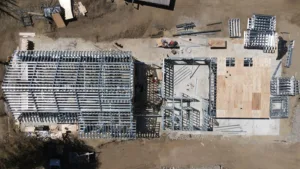
Acoustic Isolation Solutions Using Steel Framing and Roll Forming Machines
Mass-only systems are outdated for modern acoustic isolation. By contrast, the combination of steel framing, modular construction, and advanced roll forming technology enables acoustic solutions that are lighter, stronger, and more predictable. These innovations redefine what builders can achieve when designing for comfort and performance. Together, these advancements ensure that future projects deliver unmatched acoustic performance, efficiency, and durability.
Scottsdale Knowledge Base is a comprehensive repository of information, data, design aids, tools, expert advices, manuals, and many other resources on prefabricated steel framing.
Not only is it a powerful tool for any architect, engineer, contractor, framing shop, homebuilder, building material supplier, or anyone involved in cold-formed steel framing, it also enables seamless integration of Scottsdale’s industry-leading steel framing roll former equipment and technology into virtually any work flow. All licensed customers and ScotSteel subscribers receive complementary access to Knowledge Base. Become a member today of our ScotAI-assisted steel-framing information platform, and elevate your business!
Additional Scottsdale Roll Forming Solutions and Resources
- Blog – Key Reasons for Staggering Noggings in Cold-Formed Steel Wall Panels
- Blog – A Practical Guide to Cold-Formed Steel Thickness
- Blog – How New Generations Are Powering the Rise of Roll Forming
- Blog – How to Make Walls and Ceilings with Roll Forming Technology
- Blog – Better Results for 3D Printing Homes with Roll Forming Technology
- Video – Instructional Video: Cassette Exchange on K35C Roll Forming Machine
- Video – KSE K35C: A Powerful Roll Former of Miscellaneous Components
- Financial Services
To learn more about Scottsdale’s roll forming solutions and steel framing ecosystem, visit us at www.scottsdalesteelframes.com, call us at +1 (888) 406-2080, or email us at rollformers@scottsdalesteelframes.info.
